How to Cultivate a Collaborative Learning Community Among Educators
3 January 2025
In today’s fast-paced world, where knowledge is constantly evolving, educators need to stay connected, share resources, and support each other. Teaching is no longer a solitary profession; rather, it thrives on collaboration. But how do we create a space where educators can come together to share ideas, best practices, and grow collectively? This is where the concept of a collaborative learning community among educators comes into play.
So, let’s dive into how you can cultivate a thriving, collaborative learning community among educators — one where everyone feels empowered to learn and contribute.
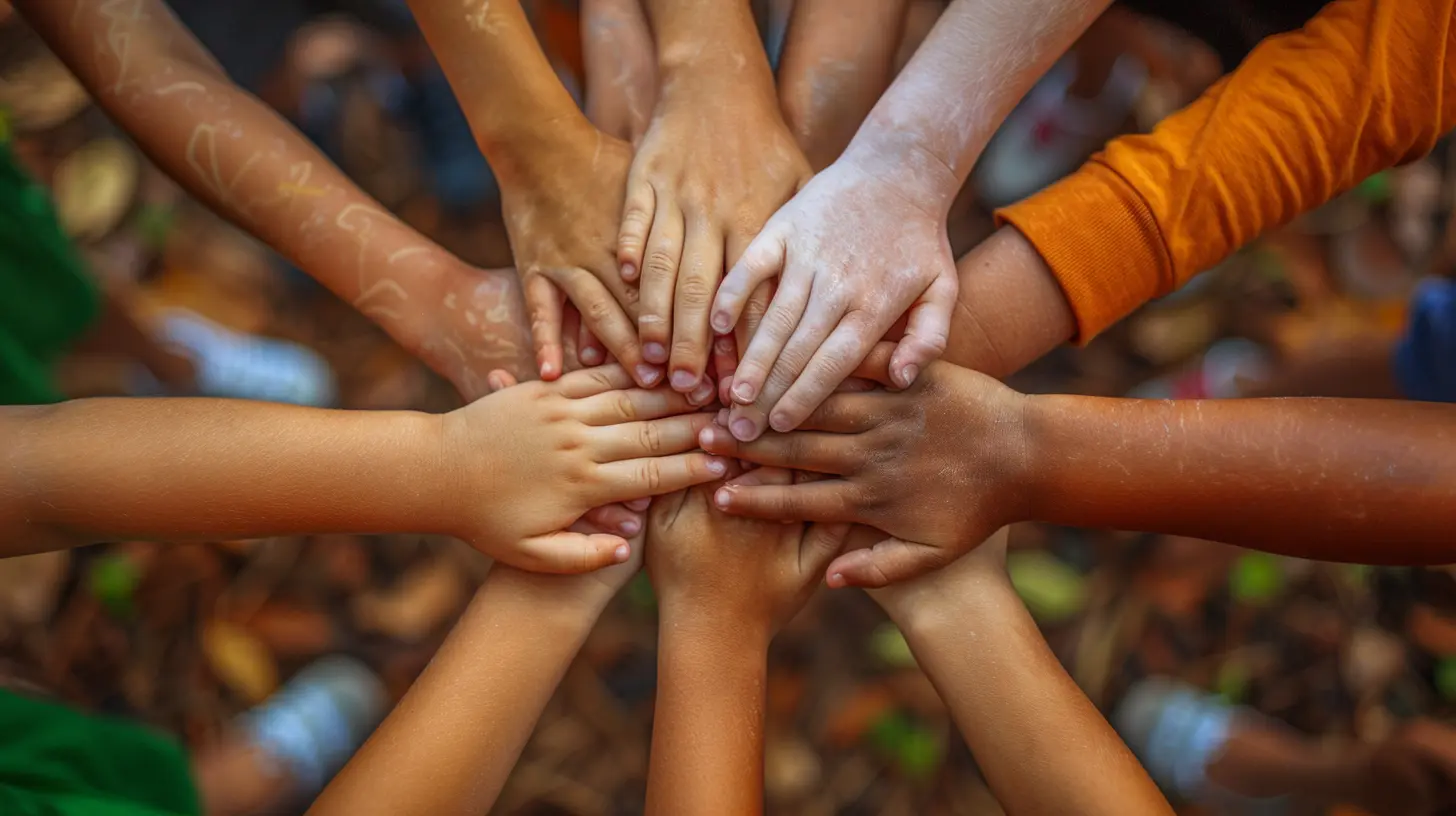
What Is a Collaborative Learning Community?
Before we even start building one, let’s first understand what a collaborative learning community (CLC) is. Simply put, a collaborative learning community is a group of educators who work together with the common goal of improving teaching practices and student outcomes. They support each other by sharing ideas, experiences, and resources. There’s a sense of mutual trust and openness, where everyone feels comfortable expressing their thoughts and learning from one another.Imagine being part of a team where you always have someone to bounce ideas off, where feedback is constructive, and where you’re encouraged to grow. That’s what a collaborative learning community offers. It’s about creating a culture of continuous professional development and shared responsibility.
But here’s the million-dollar question: how do you actually build one?

Why Is Collaboration Among Educators Important?
Before we get into the "how," let's quickly discuss the "why." Why should educators bother with collaboration in the first place?- Shared Knowledge and Expertise: No educator knows everything, and that’s okay! When educators collaborate, they pool their knowledge and expertise, which leads to better strategies, stronger lesson plans, and more effective teaching.
- Support and Encouragement: Teaching can be an isolating profession, but in a collaborative community, you always have someone to lean on. Whether you're struggling with a difficult student or trying to implement a new strategy, having that support system can make a world of difference.
- Improved Student Outcomes: When teachers work together, students benefit. By sharing what works (and what doesn't), educators can refine their teaching practices and create a more effective learning environment for students.
- Professional Growth: A collaborative learning community pushes you to grow both professionally and personally. You’re constantly learning from your peers and getting feedback that helps you improve.
Now that we know why it’s essential, let’s explore how to cultivate this kind of community.
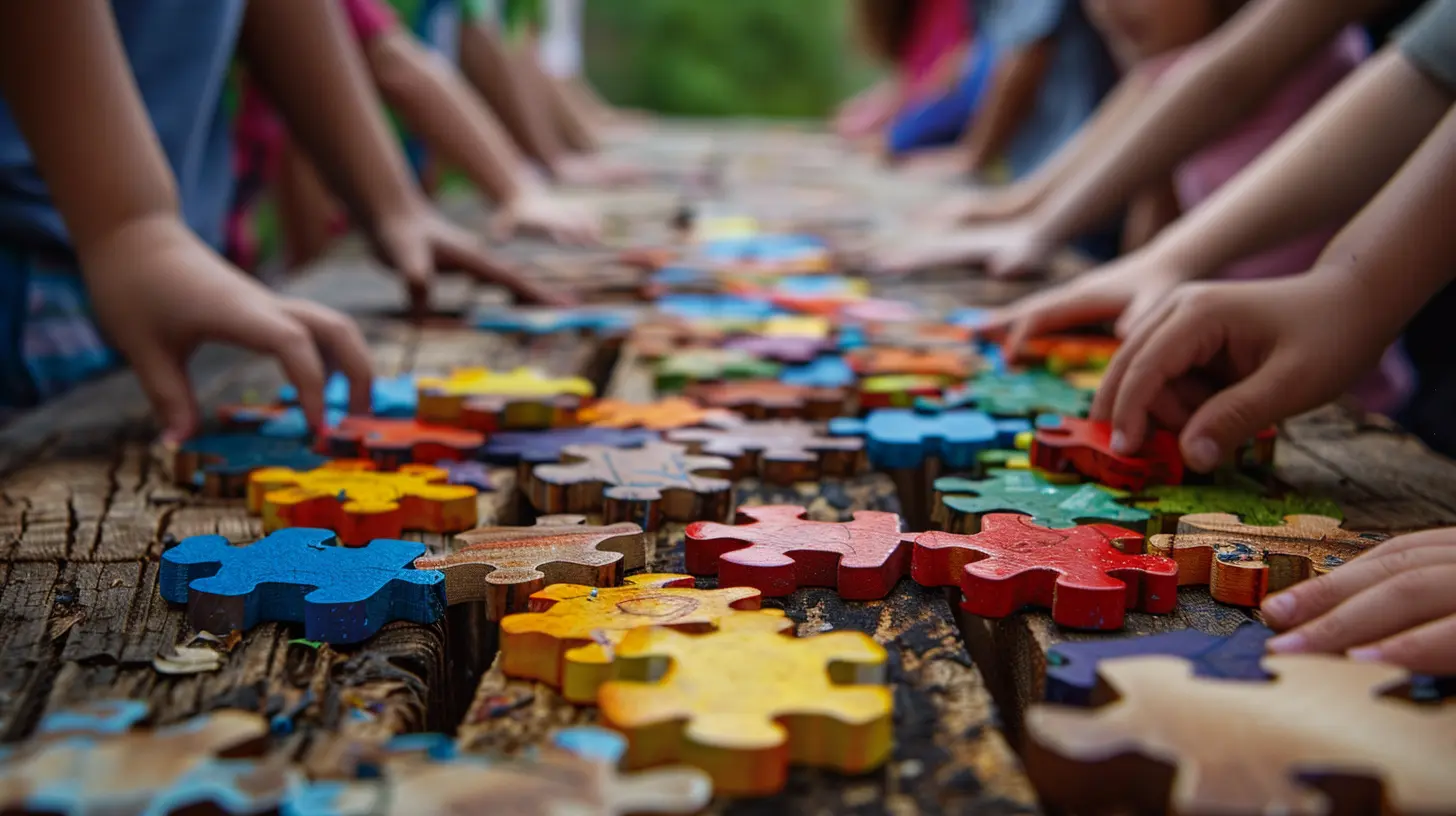
1. Establish a Shared Vision and Goals
Creating a collaborative learning community isn't something that happens overnight. The first step in building one is to establish a shared vision and set clear goals. What do you want to achieve? What are the pain points in your teaching practices that need addressing?When everyone is on the same page, it’s easier to work together toward a common objective. For instance, if the goal is to improve student engagement, then every educator in the community can contribute their ideas, strategies, and resources on how to achieve that.
It's like trying to row a boat — if everyone is paddling in different directions, you’ll just go in circles. But when everyone is focused on the same destination, you'll get there much faster.
How To Do This:
- Host a Vision Meeting: Schedule a meeting where educators can come together to discuss their shared goals and vision. It’s important to get input from everyone so the goals feel inclusive and representative of the group.- Write It Down: Once the vision is established, make sure to document it. A written guide acts as a constant reminder of your shared objectives and helps keep everyone on track.

2. Foster Open Communication
Communication is the backbone of any collaborative effort. Without open and honest communication, a learning community can’t thrive. Educators need a space where they feel comfortable sharing their thoughts, asking questions, and giving feedback — all without fear of judgment.But it’s not just about talking; it’s also about listening. Active listening shows that you value others' input and are open to learning from them.
How To Do This:
- Create Safe Spaces: Whether it’s a physical meeting room or an online platform, educators need a space where they feel safe to express themselves. If you’re using an online tool, ensure it’s user-friendly and accessible.- Encourage Transparency: Make it clear from the get-go that open communication is key. Encourage educators to share their successes as well as their challenges.
3. Utilize Technology for Collaboration
In today’s digital age, technology plays a huge role in fostering collaboration. Online platforms, social media groups, and learning management systems (LMS) allow educators to connect, share resources, and collaborate on projects, regardless of physical distance.Tools like Google Classroom, Microsoft Teams, and Zoom have made it easier than ever for educators to collaborate in real-time, share documents, and provide feedback. These platforms can serve as the hub of your collaborative learning community.
How To Do This:
- Choose the Right Tools: Select tools that suit the needs of your community. If you’re working with tech-savvy educators, more advanced tools might be appropriate. If not, stick with the basics.- Create Collaborative Spaces: Set up virtual spaces where educators can easily share resources, ask questions, and discuss ideas. Platforms like Slack or Google Drive are great for this purpose.
4. Encourage Peer Learning and Mentorship
One of the greatest benefits of a collaborative learning community is the opportunity for peer learning. Educators can learn a lot from each other’s experiences and expertise. In fact, peer learning can sometimes be more impactful than formal training sessions because it’s more practical and directly applicable to the classroom.Mentorship is another powerful way to foster collaboration. Pairing experienced educators with less-experienced ones creates a supportive environment where everyone can learn and grow.
How To Do This:
- Pair Educators: Create mentorship programs within the community where experienced educators can guide newer teachers.- Host Peer Learning Sessions: Organize sessions where educators can present their teaching strategies, discuss challenges, and offer solutions.
5. Promote a Culture of Reflection
Collaboration isn't just about sharing; it's also about reflecting. Reflection helps educators think critically about their practices, assess what’s working, and identify areas for improvement. In a collaborative learning community, educators should be encouraged to regularly reflect on both their teaching and the collaborative process itself.When educators take the time to reflect on their experiences, they can share their insights with the group, which further strengthens the community.
How To Do This:
- Create Reflection Opportunities: Encourage educators to keep teaching journals or participate in regular reflection meetings where they can discuss what’s working and what needs improvement.- Ask Guiding Questions: Provide questions that encourage deep reflection, such as “What challenges did you face this week?” or “How could you approach this differently next time?”
6. Recognize Contributions and Celebrate Success
Everyone likes to feel appreciated, and recognizing individual contributions can go a long way in fostering a collaborative learning community. When educators see that their efforts are acknowledged, they’re more likely to stay engaged and committed to the community.Celebrating both small wins and big successes helps maintain motivation and builds a positive, encouraging atmosphere.
How To Do This:
- Acknowledge Contributions: Publicly recognize educators who share resources, offer advice, or take the lead on projects.- Celebrate Successes: Whether it’s a successful collaboration or improved student outcomes, make sure to celebrate these achievements as a group.
7. Provide Ongoing Professional Development
A collaborative learning community should be a place where educators can continue to grow in their profession. This means offering ongoing professional development opportunities that are aligned with the goals of the community.By providing access to workshops, webinars, or even informal learning sessions, educators can continually improve their skills and bring new knowledge back to the community.
How To Do This:
- Host Workshops: Organize workshops or professional development sessions that address the specific needs of the community.- Share Resources: Encourage educators to share books, articles, or online courses that have helped them in their professional growth.
8. Be Patient and Persistent
Building a collaborative learning community takes time. It’s not something that happens overnight, and there will be bumps in the road. But with patience, persistence, and a commitment to continuous improvement, the benefits will far outweigh the challenges.Remember, collaboration isn’t just a one-time event; it’s an ongoing process. A community that grows together stays together.
How To Do This:
- Stay Committed: Keep the momentum going by regularly checking in with your community. Don’t let things fizzle out after the initial excitement wears off.- Adapt When Needed: Be flexible and willing to adapt as the needs of your community change.
Conclusion
Cultivating a collaborative learning community among educators is one of the most impactful things you can do for professional development and student success. It’s about creating a space where educators feel safe to share, learn, and grow together. By establishing a shared vision, fostering open communication, leveraging technology, and promoting peer learning, you’ll be well on your way to building a thriving community.It’s not always easy, but the rewards — for both educators and students — are well worth the effort. So, why not take the first step today?
all images in this post were generated using AI tools
Category:
Professional DevelopmentAuthor:

Fiona McFarlin
Discussion
rate this article
18 comments
Zeno Hudson
Remember, collaboration among educators is like herding cats—it's messy, chaotic, but oh-so-rewarding when they finally sit together!
February 16, 2025 at 5:13 AM

Fiona McFarlin
Absolutely! Embracing the chaos of collaboration often leads to the most meaningful connections and insights among educators.
Zephira Russell
Collaboration: where educators unite, ideas bloom, and coffee breaks turn into creative breakthroughs!
February 1, 2025 at 9:20 PM

Fiona McFarlin
Absolutely! Collaboration fosters innovation and enhances our teaching practices, turning every interaction into an opportunity for growth and creativity.
Abram Clarke
What a fantastic read! Cultivating a collaborative learning community is essential for educators to thrive together. Your insights on fostering relationships and sharing resources are inspiring. Let’s embrace these strategies to enrich our teaching practices and create supportive environments for both educators and students alike!
January 28, 2025 at 3:49 AM

Fiona McFarlin
Thank you for your kind words! I'm glad you found the insights valuable. Together, we can truly enhance our teaching practices and foster supportive environments for everyone.
Tabitha Klein
Cultivating a collaborative learning community among educators transcends mere interaction; it requires vulnerability, trust, and shared purpose. By embracing diverse perspectives and fostering open dialogue, we not only enhance our professional growth but also inspire a culture of innovation and empathy that ultimately enriches the educational experience for our students.
January 23, 2025 at 4:32 AM

Fiona McFarlin
Thank you for highlighting the importance of vulnerability and trust in building a collaborative learning community. Embracing diverse perspectives is indeed key to fostering innovation and enriching our students' educational experience.
Milena Kim
Creating a collaborative learning community among educators hinges on fostering trust, open communication, and shared goals. By embracing diverse perspectives and leveraging each other's strengths, we can enhance professional growth and ultimately improve student outcomes, transforming individual classrooms into vibrant learning ecosystems.
January 19, 2025 at 3:50 AM

Fiona McFarlin
Absolutely! Trust and open communication are essential for building a collaborative learning community. Embracing diverse perspectives indeed enriches our professional growth and enhances student outcomes. Thank you for emphasizing these key elements!
Sera Hines
Collaborative learning among educators is like a potluck dinner—everyone brings their favorite dish, and if someone forgets the dessert, we just turn it into a bonding experience over shared confusion and a frantic search for snacks!
January 16, 2025 at 3:50 AM

Fiona McFarlin
Great analogy! Just like a potluck, a collaborative learning community thrives on diverse contributions, adaptability, and shared experiences—both planned and unexpected.
Rivera Lambert
Collaborative learning among educators is like a potluck dinner—everyone brings their unique dish! Let’s spice up our teaching with ideas, laughter, and a dash of teamwork. Bon appétit to collaboration!
January 11, 2025 at 9:45 PM

Fiona McFarlin
Absolutely! Just like a potluck, diverse contributions enrich our teaching community, fostering creativity and joy. Let’s continue to share, learn, and grow together!
Cambria Heath
This article offers valuable insights on fostering collaboration among educators. By emphasizing open communication, shared resources, and mutual support, it effectively outlines practical strategies that can enhance professional relationships and create a more dynamic and effective learning environment for all involved.
January 11, 2025 at 4:40 AM

Fiona McFarlin
Thank you for your thoughtful feedback! I'm glad you found the insights on collaboration among educators valuable. Your points on communication and mutual support are crucial for building a thriving learning community.
Beau McClure
Collaboration thrives on empathy; let educators share and grow together!
January 9, 2025 at 8:38 PM

Fiona McFarlin
Absolutely! Empathy is the foundation of strong collaboration, enabling educators to connect, support one another, and foster a vibrant learning community.
Lucy Mahoney
Thank you for these insightful tips! Collaboration truly enriches our teaching experiences and community.
January 8, 2025 at 11:35 AM

Fiona McFarlin
Thank you for your kind words! I’m glad you found the tips valuable—collaboration truly enhances our educational journeys!
Kara McGuffin
This article beautifully highlights the importance of building supportive connections among educators. Fostering collaboration not only enhances teaching practices but also nurtures a sense of belonging. Together, we can create a vibrant community that inspires and empowers us all.
January 8, 2025 at 4:54 AM

Fiona McFarlin
Thank you for your thoughtful comment! I truly believe that supportive connections are key to empowering educators and enriching our community.
Kassidy Gray
Creating a collaborative learning community among educators enhances professional growth and student outcomes. Emphasizing open communication, shared goals, and mutual support fosters a culture of continuous improvement and collective problem-solving essential for effective teaching.
January 6, 2025 at 7:51 PM

Fiona McFarlin
Thank you for your insightful comment! I completely agree that open communication and mutual support are vital for fostering a thriving collaborative learning community among educators.
Alvin McGuire
Collaboration among educators fosters a supportive learning environment, enhances professional development, and improves student outcomes. By sharing resources and best practices, educators can build a stronger, more effective teaching community.
January 5, 2025 at 1:52 PM

Fiona McFarlin
Thank you for highlighting the importance of collaboration! I completely agree that it strengthens our teaching community and ultimately benefits our students.
Archer Cook
Great insights! Collaboration truly enhances the learning experience for everyone.
January 4, 2025 at 8:12 PM

Fiona McFarlin
Thank you! I'm glad you found the insights valuable. Collaboration really does enrich our learning environments!
Eli Roberson
Creating a collaborative learning community among educators is the key to unlocking potential and fostering innovation. When we share ideas, support one another, and celebrate our successes together, we empower not only ourselves but our students as well. Let's embrace collaboration and inspire a brighter future in education!
January 4, 2025 at 12:55 PM

Fiona McFarlin
Absolutely! Collaboration among educators is essential for fostering innovation and empowering both teachers and students. Together, we can create a vibrant learning community that inspires success.
Michelle Cross
In the garden of minds, let seeds of trust take root, Where voices harmonize and ideas bloom, Together we weave a tapestry of wisdom, Fostering a community where every soul finds room to thrive and grow.
January 4, 2025 at 5:46 AM

Fiona McFarlin
Thank you for beautifully capturing the essence of collaboration! Your words perfectly reflect the heart of fostering a nurturing and inclusive learning environment among educators.
Kennedy McCarty
Creating a collaborative learning community among educators is like planting a garden. It thrives on shared ideas, mutual support, and respect. Together, we can cultivate a vibrant space where everyone grows and flourishes. Let's nurture this growth!
January 3, 2025 at 7:26 PM

Fiona McFarlin
Absolutely! Just as a garden needs care and collaboration, so does a learning community. Let’s keep nurturing these connections for everyone's growth!
Soleil Whitaker
This article offers valuable insights into fostering collaboration among educators. By emphasizing open communication and shared goals, it creates an environment that enhances professional growth and student outcomes. Implementing these strategies can truly transform the educational experience, making it more inclusive and supportive. Thank you for sharing these important approaches!
January 3, 2025 at 4:44 AM

Fiona McFarlin
Thank you for your thoughtful comment! I'm glad you found the insights on collaboration valuable for enhancing both professional growth and student outcomes. Your feedback is appreciated!
MORE POSTS

Student Exchange Programs: A Pathway to Global Scholarships
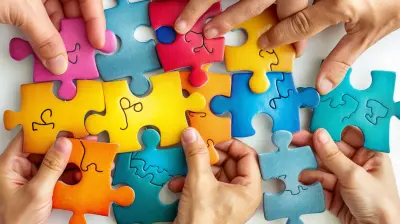
Navigating Group Dynamics in the Classroom: Tips for Successful Collaboration

The Role of Teachers in Providing Homework Support
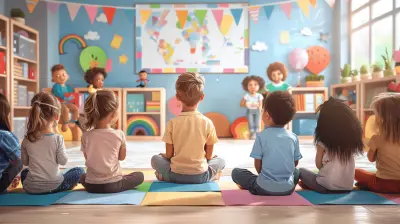
Inclusive Education in Multicultural Classrooms

The Importance of Civic Education in Diverse Communities
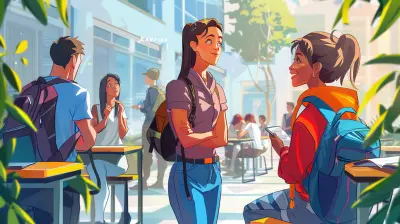
The Psychological Benefits of Participating in Student Exchange Programs

Effective Time Management Tips for Distance Learners

How to Stay Connected with Your Host Country After Your Exchange Program Ends

Simple Machines: Exploring Physics with Levers, Pulleys, and Gears
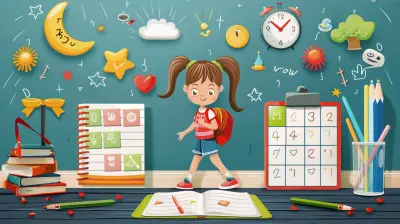
How to Build a Flexible Homeschooling Schedule
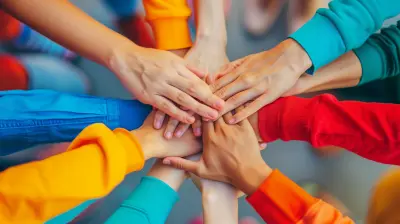
How to Motivate Reluctant Students to Engage in Group Work